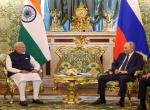Tariffs have once again emerged as a cornerstone of US economic policy under the Trump 2.0 administration. On April 2, 2025, President Donald J. Trump declared a national emergency[1], citing the $1.2 trillion US trade deficit as a threat to economic stability and national security. The administration attributes the persistent deficit to unfair foreign trade practices, non-tariff barriers, and structural imbalances, which have undermined US manufacturing, created supply chain vulnerabilities, and weakened the defense-industrial base. To counteract these challenges, the Trump administration has implemented sweeping "reciprocal" tariffs ranging from 10 per cent to 49 per cent[2] on imports from various countries, aiming to restore domestic production, enforce fair trade practices, and strengthen supply chains. This policy seeks to enhance economic resilience and national security by reducing reliance on foreign goods and addressing long-standing trade imbalances. However, the effectiveness and broader implications of such tariff policies remain a matter of intense debate.
Tariffs as a Tool for Fiscal Stability
Beyond trade imbalances, tariffs are being positioned as a mechanism to restore industrial competitiveness and improve fiscal sustainability. The US federal government continues to run substantial deficits, with the Fiscal Year (FY) 2024 deficit reaching approximately $1.8 trillion. This shortfall, resulting from total government spending of $6.75 trillion against total revenue of $4.92 trillion[3], marks the fifth consecutive year with a deficit exceeding $1 trillion. As national debt grows, so too do interest payments, which exceeded $1 trillion in 2024[4], significantly reducing the impact of GDP growth. These fiscal pressures necessitate revenue-generation strategies, and tariffs have been proposed as a key instrument in addressing these concerns.
The newly established Department of Government Efficiency (DOGE), led by Elon Musk, has been tasked with reducing federal spending by $1 trillion within the current fiscal year. This initiative focuses on identifying and eliminating inefficiencies across various government agencies. However, sceptics question the feasibility of these reductions, as only a fraction of the projected cuts have been realized to date.
Simultaneously, the administration claims that new tariffs will generate approximately $600 billion annually, totalling around $6 trillion over a decade. [5] White House aide Peter Navarro has asserted that these measures could significantly shrink the budget deficit and encourage domestic manufacturing. However, economic analysts caution that revenue projections from tariffs may be overly optimistic, given the risk of declining import volumes and potential economic disruptions.
Combining $1 trillion in spending cuts with an estimated $600 billion in annual tariff revenue could significantly reduce the annual budget deficit, potentially eliminating it altogether and even creating a budget surplus. However, the success of this strategy depends on the realization of both the proposed spending cuts and the anticipated tariff revenues, as well as their broader economic impact.
Historical Context: The Role of Tariffs in US Economic Development
Historically, tariffs were the primary revenue source for the US government before the introduction of the federal income tax in 1913. The Tariff Act of 1789 ensured revenue collection while protecting domestic industries. Protectionist policies, such as the Tariff of 1828 and the Morrill Tariff of 1861, played a significant role in fostering US industrial growth. By the late 19th century, the US had significantly reduced its reliance on imports, producing most of its manufactured goods domestically. However, the Civil War necessitated a shift in revenue strategy, leading to the introduction of an income tax in 1861. Although later repealed, the growing scale of government spending eventually led to the ratification of the 16th Amendment in 1913, permanently establishing the federal income tax. [6]
The Return of Protectionism: Trump and Biden Tariff Policies
During his first term (2017-2021), Trump implemented aggressive tariff policies, particularly targeting China under Section 301 and Section 232. His administration imposed a 25 per cent tariff on $250 billion worth of Chinese goods and a 10 per cent tariff on an additional $300 billion, citing intellectual property theft and trade imbalances. Additionally, a 25 per cent tariff was placed on steel and a 10 per cent tariff on aluminium imports, impacting key US allies such as Canada, the EU, and Japan. [7] These measures had mixed effects—while benefiting certain domestic industries, they also raised costs for manufacturers reliant on imported materials and triggered retaliatory tariffs from trading partners. Biden maintained many of Trump's tariffs but adjusted them strategically, imposing higher levies on critical sectors such as Chinese electric vehicles (100 per cent) and semiconductors (50 per cent) while easing restrictions on allies like the EU and Japan. [8] His administration's approach sought to balance protectionism with supply chain resilience, ensuring tariffs were targeted to minimize diplomatic fallout.
Evaluating the Impact: Inflation, Trade Relations, and Industrial Competitiveness
One of the main concerns surrounding tariffs is their inflationary impact. Higher import costs often translate to increased consumer prices. The Trump administration counters this argument by emphasizing that inflation is primarily driven by excessive money supply rather than trade policy. Policymakers argue that higher tariffs merely cause localized price adjustments rather than broad monetary inflation. While tariffs can incentivize domestic production and reduce reliance on foreign markets, they also risk retaliatory actions that could harm US exporters. The US-China trade war, for instance, resulted in billions of dollars in lost exports for American farmers, prompting a $28 billion bailout to mitigate the damage. [9] Moving forward, the administration must balance tariff imposition with diplomatic efforts to prevent prolonged trade conflicts.
Tariffs vs. Industrial Policy: Finding the Right Balance
Tariffs alone cannot sustain long-term industrial competitiveness. The US has recognized the necessity of coupling tariffs with strategic investments in domestic industries. Policies like the CHIPS Act aim to bolster critical sectors such as semiconductors through subsidies and tax incentives. Additionally, the Trump administration has proposed broader economic reforms, including a $5 million permanent residency programme to attract high-net-worth individuals, privatization of underutilized federal lands, and the creation of a sovereign wealth fund to transition from debt-driven to asset-driven growth. These measures, if implemented effectively, could reinforce fiscal stability and industrial resurgence.
As part of its broader economic strategy, the Trump administration has established the United States Investment Accelerator, an office within the Department of Commerce tasked with expediting large-scale investments exceeding $1 billion. [10]The initiative aims to reduce regulatory barriers, streamline permitting, and coordinate federal agency responses to investor concerns. Additionally, it will oversee the CHIPS Program Office to secure better deals under the CHIPS Act.
By facilitating collaboration with national laboratories and state economic development organizations, the Investment Accelerator seeks to reinforce America's status as a prime investment destination. This initiative builds on previous efforts to attract foreign capital while maintaining national security interests, further integrating tariffs with domestic industrial policy.
Conclusion: The Future of US Tariff Policy
Ultimately, the US must navigate the fine line between protectionism and economic openness. While tariffs can serve as a tool to safeguard industries and enhance economic resilience, their broader success hinges on strategic integration with industrial policies that foster innovation, investment, and long-term competitiveness.
China’s rapid ascent as an industrial and technological powerhouse has forced the US to undertake a drastic course correction. The reversal of globalization to protect and rebuild American industries has broad implications, affecting trade dynamics in Europe, Asia, and beyond. Countries that previously benefited from global supply chains and open markets must now adapt to an era of economic nationalism.
The Trump administration’s broader economic vision extends beyond tariffs, leveraging US economic power through structural reforms and innovative revenue sources. Selling underutilized federal lands for private development, investing in high-growth industries like AI and defense, and modernizing government infrastructure through private-sector partnerships are among the proposed initiatives. Additionally, strengthening energy independence through domestic production and nuclear energy investments, along with the creation of a sovereign wealth fund, could secure long-term economic stability.
Future economic strategies will need to balance fiscal responsibility, industrial policy, and global economic engagement to ensure sustainable growth. Policymakers must also weigh the economic and geopolitical consequences of prolonged tariff use, ensuring that protectionist measures do not inadvertently weaken the US economy in the long run.
References
[1] Fact Sheet: President Donald J. Trump Declares National Emergency to Increase our Competitive Edge, Protect our Sovereignty, and Strengthen our National and Economic Security, https://www.whitehouse.gov/fact-sheets/2025/04/fact-sheet-president-donald-j-trump-declares-national-emergency-to-increase-our-competitive-edge-protect-our-sovereignty-and-strengthen-our-national-and-economic-security/
[2] Donald Trump Unveils Reciprocal Tariffs On Countries. See Full List, https://www.ndtv.com/world-news/trump-unveils-reciprocal-tariffs-on-countries-see-full-list-liberation-day-tariffs-donald-trump-8073189
[3] The Federal Budget in Fiscal Year 2024: An Infographic, https://www.cbo.gov/publication/61181
[4] What Is the National Debt Costing us? https://www.pgpf.org/article/what-is-the-national-debt-costing-us
[5] A $6 Trillion Trump Tax Increase? https://www.wsj.com/opinion/donald-trump-tariffs-peter-navarro-6-trillion-tax-increase-2e5cc39d
[6] A Brief History of Tariffs in the US, Carnegie Investment Counsel Blog, https://blog.carnegieinvest.com/a-brief-history-of-tariffs-in-the-us
[7] Trump Tariffs: What’s Happened, What’s Potentially Coming, and How to Prepare, https://www.clearytradewatch.com/2025/01/trump-tariffs-whats-happened-whats-potentially-coming-and-how-to-prepare
[8] US-China Relations in the Biden Era: A Timeline, https://www.china-briefing.com/news/us-china-relations-in-the-biden-era-a-timeline
[9] Trump already weighing multi-billion-dollar tariff bailout for US farmers, https://www.yahoo.com/news/trump-already-weighing-multi-billion-234029209.html
[10] Fact Sheet: President Donald J. Trump Establishes the United States Investment Accelerator, https://www.whitehouse.gov/fact-sheets/2025/03/fact-sheet-president-donald-j-trump-establishes-the-united-states-investment-accelerator/
(The paper is the author’s individual scholastic articulation. The author certifies that the article/paper is original in content, unpublished and it has not been submitted for publication/web upload elsewhere, and that the facts and figures quoted are duly referenced, as needed, and are believed to be correct). (The paper does not necessarily represent the organisational stance... More >>
Image Source: https://www.hindustantimes.com/ht-img/img/2025/04/03/550x309/USA-TRUMP-TARIFFS-REACTION-COMPANIES-1_1743645050267_1743645060402.JPG









Post new comment